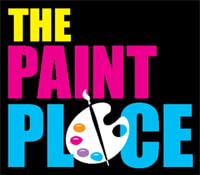Your paint brushes are a reflection of your personal artistic style. Some brushes are better suited to specific painting techniques, and some simply feel more comfortable to a particular artist. At the beginning, you only really need two brushes—one flat and one round. So head out to your local art supply store and see which brushes of those types appeal to you. Later, though, you will want to tailor your brushes to your painting style. Here is what you should know about choosing brushes.
Types
Acrylic paint brushes come in eight basic types. Here is a list of the types and suggestions for what each type does best:
Round: A round brush has a nice, long, oval tip. It’s a multitasker, capable of both sketching and detail work, as well as filling in smaller areas. Use a round brush with thinned paint, and press down harder to create a wider line.
Pointed Round: A pointed round brush looks a lot like a round brush, except that the tip comes to a sharp point. These brushes are good for fine detail work, including retouching.
Detail Round: As the name suggests, this brush is designed for close-up detail work. It looks like a regular round brush, except that it is shorter and often thinner, with shorter bristles.
Flat: A flat brush is squared off at the end, with medium or long bristles. Flat brushes are excellent for washes, bold strokes, and filling in large spaces, as well as for varnishing your finished painting.
Bright: A bright brush resembles a flat brush, except that the bristles are shorter and the edges of the tip curve slightly inward. A bright brush is useful for close-up work with short, carefully controlled strokes. Bright brushes tend to lay down thick, heavy paint.
Filbert: A filbert brush is a cross between a flat brush and a round brush, with a softly oval tip. It’s best at blending colors and creating soft edges.
Angular Flat: An angular flat brush has its bristles cut on an angle so that one side is significantly longer than the other. These brushes are great for curves and corners, and can also stand in for a regular flat brush in a pinch.
Fan: A fan brush literally looks like a fan. It’s a flat brush with widely spread bristles. Flat brushes can create interesting textural and feathering effects, but be sure to choose one with strong bristles to avoid clumping.
Sizes
Acrylic paint brushes have numbered sizes, but they are not standardized between manufacturers. However, they do run the gamut from tiny to immense. Start with medium-sized brushes at first, and add more sizes to your collection as you sense the need. Since the numbers are not standardized, consider buying new brushes at your local art supply shop rather than trying to order them online.
Handle Lengths
Handle lengths range from roughly the size of a pencil to that of a standard ruler. Longer handles let you stand further away from the painting, while shorter handles are designed for close-up work. There is no right or wrong choice, only personal preference. Many artists prefer to use both at different points in the same painting.
Hair Types
The hairs, or bristles, on a paint brush come in two types: natural and synthetic. For acrylic painting, synthetic bristles are generally the best choice. They stand up better to watered down paint, and are resistant to the chemicals in the paint that can warp natural hairs.
General Considerations
The best way to choose paint brushes is to try holding several and see what feels the most natural to you. Once you have settled on a brush you like, carefully check its bristles. If they are frayed or falling out, choose a different brush with the same characteristics.

